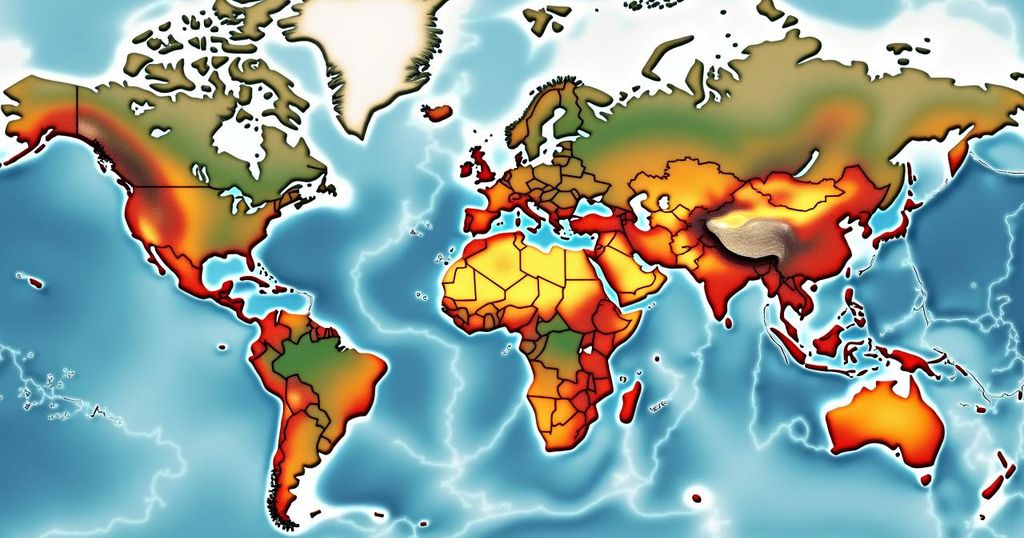Analysis of Earthquake Fatalities Unveils Disproportionate Risks Among Certain Nations

A new study introduces the Earthquake Fatality Load (EQFL) metric, identifying five countries—Ecuador, Lebanon, Haiti, Turkmenistan, and Portugal—as having the highest expected casualties in an earthquake relative to their populations. This research is based on data from the last 500 years and emphasizes the need for increased earthquake readiness in vulnerable nations.
Recent research has developed a new metric to assess the impact of earthquakes on populations across different countries, termed the Earthquake Fatality Load (EQFL). This metric indicates that over the past 500 years, five countries—Ecuador, Lebanon, Haiti, Turkmenistan, and Portugal—have witnessed disproportionately high casualty rates relative to their populations when earthquakes occur. The EQFL is calculated by comparing the number of earthquake-related fatalities to a nation’s total population at the time of a seismic event, offering a more accurate picture of potential human loss due to future earthquakes. The study conducted by researchers analyzed historical data from 35 nations which have each recorded at least 10,000 earthquake deaths since 1500, representing approximately 97% of all documented earthquake fatalities. This analysis excludes tsunami-related fatalities, which require a different assessment methodology. Factors influencing high EQFLs include population density, geological settings, and the state of disaster preparedness within a nation. Smaller countries tend to experience greater human impact when fatalities occur, as the loss represents a significant portion of their populations. Additionally, the tectonic settings of countries like Ecuador and Haiti facilitate the occurrence of large quakes due to extensive fault lines. The research elucidates that while Japan and the United States are located in seismically hazardous areas, their advanced infrastructure and emergency response mechanisms contribute to their lower EQFL rankings, which indicates a reduced risk of high casualty figures compared to more vulnerable countries. Moreover, the EQFL metric is dynamic; it is not a fixed prediction and can fluctuate based on emerging data and changes in infrastructure or response strategies after seismic events. Given these findings, the EQFL serves as a tool for raising awareness and prompting action in nations where earthquake fatalities are most likely to be severe. By addressing vulnerabilities and enhancing disaster preparedness, countries can mitigate the risk of catastrophic loss of life in the event of future earthquakes. As stated by Max Wyss, a contributor to the study, “someone in those smaller countries could use this information to get their governments to pay attention to the problem and fund earthquake readiness.”
The study focuses on the examination of earthquake casualties over the last five centuries to identify regions most susceptible to catastrophic loss of life during seismic events. By introducing the Earthquake Fatality Load (EQFL) metric, the researchers provide insights into how a country’s demographics and geological characteristics influence the expected mortality rates from earthquakes. This research is pertinent given the historical impact of earthquakes on human populations, and the necessity for improved awareness and preparedness in high-risk nations.
In conclusion, the Earthquake Fatality Load (EQFL) provides a significant advancement in understanding and assessing the risk and impact of earthquakes on various countries. By highlighting those most vulnerable based on their demographics and readiness, it serves as a catalyst for needed attention and resources to enhance disaster preparedness. The dynamic nature of this metric emphasizes the importance of continuous monitoring and adaptation of strategies to minimize casualties during seismic events.
Original Source: temblor.net





